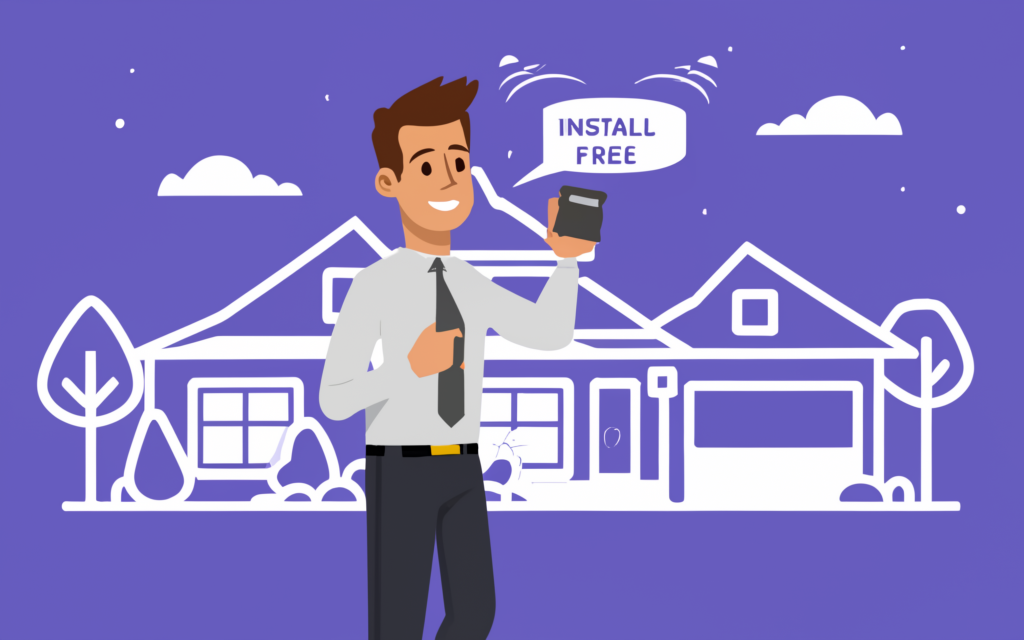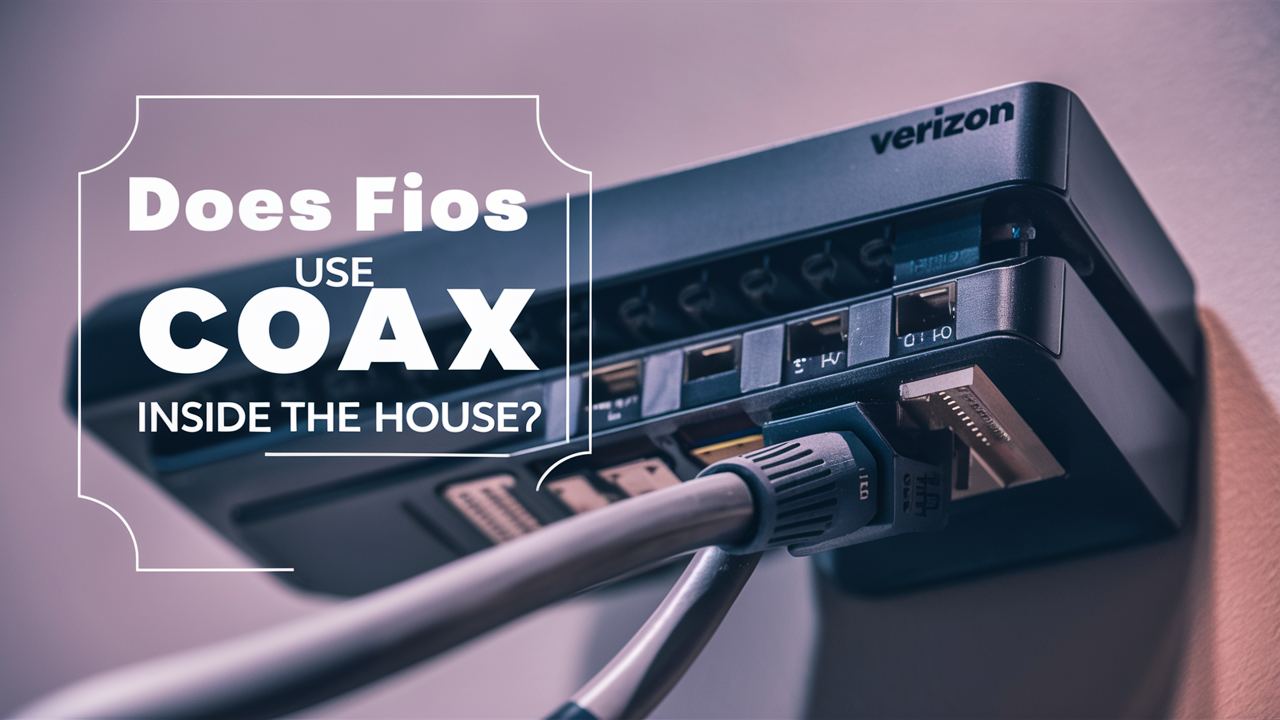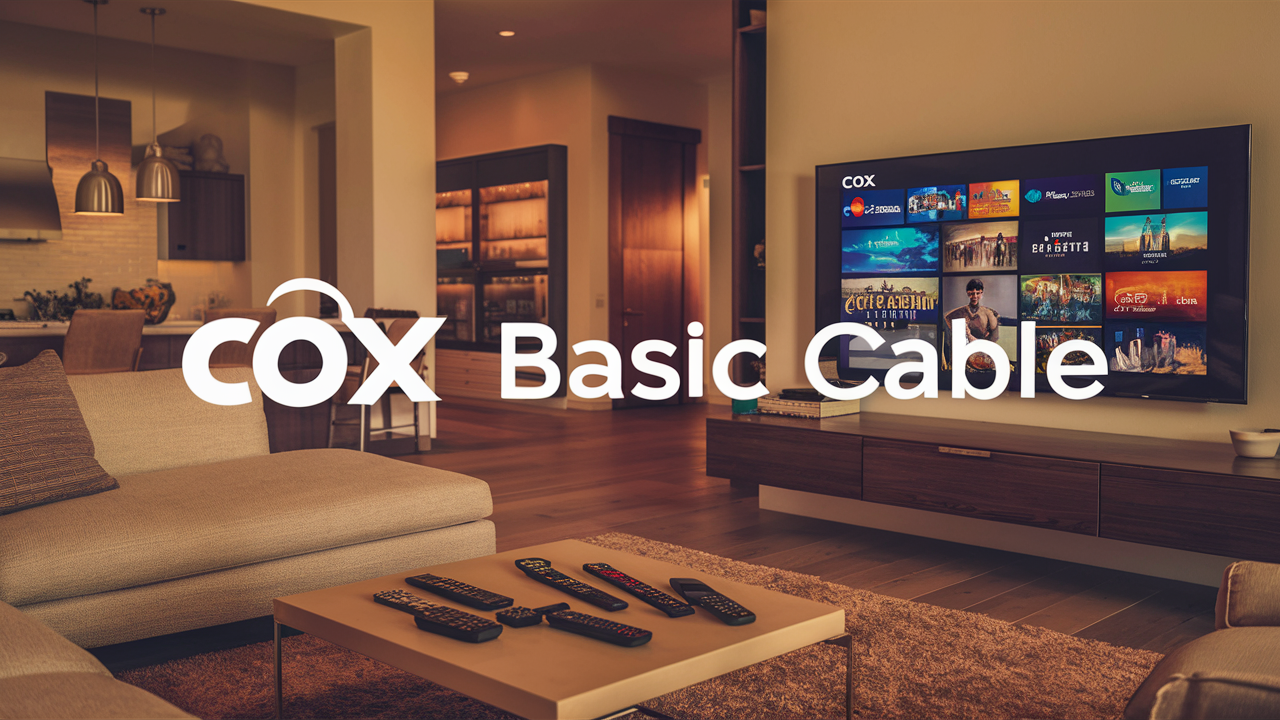Does Cox Install for Free?

Discover whether Cox Communications offers free installations for their internet, TV, and phone services. This comprehensive guide breaks down current 2025 installation policies, potential hidden fees, and strategies to potentially get your Cox installation at no extra cost.
Cox Installation Overview: What You Need to Know
When considering a new internet, TV, or home phone service from Cox Communications, one of the primary questions that arises is about the installation process and its associated costs. Many consumers hope for a "free installation," a common promotional offering in the telecommunications industry. This guide aims to provide a clear, in-depth understanding of Cox's installation policies as of 2025, addressing whether free installations are a reality, what factors influence costs, and how you might secure a no-cost setup for your new Cox services. We will delve into the nuances of their service offerings, potential promotions, and practical advice to help you navigate the process effectively and economically.
Is Cox Installation Ever Free? Unpacking the Policies
The direct answer to "Does Cox install for free?" is nuanced. While Cox Communications doesn't universally offer free standard installations as a default policy, there are specific circumstances and promotional periods where this can indeed be the case. Understanding these exceptions is key to potentially avoiding installation fees.
Promotional Offers and New Customer Deals
Cox, like many internet service providers (ISPs), frequently runs special promotions aimed at attracting new customers. These can include waived installation fees as part of a bundle deal, a limited-time offer for signing up, or as an incentive for choosing a specific package or contract length. These promotions are often advertised on their website, through direct mailers, or via online advertising campaigns. It's crucial to check the latest offers when you are ready to sign up, as these deals can change frequently. For instance, a common promotion in 2025 might be "Free Standard Installation with a 2-Year Agreement on our Gigablast plan."
Bundled Services
Sometimes, signing up for a bundle of services – such as internet, TV, and phone – can qualify you for a free or reduced-cost installation. Providers often see bundled customers as more valuable and loyal, so they may offer incentives like waived installation fees to encourage this type of sign-up. If you're looking to consolidate your home services, a Cox bundle might be a good way to achieve this and potentially save on installation.
Existing Customer Upgrades
While less common, existing Cox customers upgrading to a significantly different service tier or adding new services might occasionally be offered a free installation, especially if it involves new equipment or a more complex setup. This is usually at the discretion of Cox and may depend on your customer loyalty and the specific upgrade.
Self-Installation Options
For customers with existing Cox outlets in their home, self-installation can be a way to completely bypass installation fees. Cox often provides self-installation kits that include necessary equipment and instructions. If your home is already wired for Cox services, this is a highly effective method to avoid any professional installation charges. We will explore this further in the "Alternatives to Professional Cox Installation" section.
Negotiation and Special Circumstances
In some cases, particularly if you are a long-time customer or have experienced service issues in the past, you might be able to negotiate a waived installation fee with a Cox representative. This is not guaranteed but can be a possibility worth exploring.
Factors Influencing Cox Installation Costs
When a free installation isn't available, the cost of setting up your Cox service can vary based on several factors. Understanding these will help you anticipate potential charges.
Type of Installation
Cox offers different types of installations, each with its own pricing structure. The most common are standard installation and professional installation.
- Standard Installation: This typically involves a technician visiting your home to set up the modem, router, and connect the necessary lines. It's the most common type for new service activations.
- Professional Installation: This might be required for more complex setups, such as running new lines, installing multiple outlets, or setting up advanced home networking solutions. These are generally more expensive.
Service Complexity
The type of services you are signing up for can also influence the installation cost. For example, installing a basic internet modem might be simpler and less expensive than setting up a comprehensive Cox Contour TV system with multiple boxes and advanced features.
Home Wiring and Infrastructure
The existing wiring in your home plays a significant role. If your home is already wired with coaxial cable outlets in the desired locations, the installation will likely be straightforward. However, if new wiring needs to be run through walls, underground, or if there are no existing outlets, the installation will be more labor-intensive and thus more costly. The technician might need to drill holes, run cables, and ensure proper connections, which adds to the time and complexity.
Equipment Needs
While the modem and router are often included with service packages (sometimes with a monthly rental fee), the number of devices and their complexity can impact installation. For instance, setting up multiple TV boxes for a large household will take longer than just connecting a single internet modem.
Promotional Periods and Exclusions
As mentioned, installation fees are often waived during promotional periods. However, these promotions may have exclusions. For example, a "free installation" might only apply to standard installations and not to more complex professional installations. Always read the fine print of any offer.
Location and Accessibility
While less common for standard residential installations, in rare cases, extremely remote locations or properties with difficult access might incur additional charges due to the increased time and effort required for the technician to reach and service the property.
Understanding Cox Installation Fees in 2025
As of 2025, Cox Communications typically charges an installation fee for new service activations. This fee covers the cost of sending a technician to your home to set up your equipment, connect your services, and ensure everything is working correctly.
Standard Installation Fees
The standard installation fee for Cox services in 2025 generally ranges from $50 to $150. This fee is for a technician to come to your home and connect your internet, TV, or phone service to the existing wiring. This includes setting up the modem/router and ensuring connectivity. The exact amount can vary by region and current promotions. For example, a typical charge might be around $99 for a standard internet installation.
Professional Installation Fees
For more complex installations, such as running new cable lines, installing multiple outlets, or setting up advanced home networking, Cox may charge a higher "professional installation" fee. This can range from $100 to $250 or more, depending on the scope of work required. This type of installation is less common for standard residential setups and is usually reserved for situations where the existing infrastructure is insufficient.
Self-Installation Kit Fees
If you opt for a self-installation, Cox typically provides a self-installation kit. There might be a small fee associated with the kit itself, often ranging from $10 to $25, which covers the cost of shipping and the materials provided. However, this is significantly less than a professional installation fee and is often waived if you pick up the kit at a local Cox store.
Equipment Rental Fees
It's important to distinguish installation fees from equipment rental fees. While installation is a one-time charge for setup, equipment rental (modem, router, TV boxes) is a recurring monthly charge. These fees can add up and should be factored into your overall monthly service cost. For example, renting a Cox modem/router combo might cost around $12-$15 per month in 2025.
Fees for Additional Outlets or Services
If you require additional TV outlets or want to extend internet connectivity to other parts of your home beyond the initial setup, there may be extra charges for each additional outlet or service point. These are typically itemized on your installation quote.
Hidden Fees and Fine Print
Always read the terms and conditions carefully. Sometimes, advertised prices for services might not include all applicable fees. Be sure to ask your Cox representative about all potential charges before committing to a service agreement. This includes taxes, regulatory fees, and any other surcharges that might apply.
Types of Cox Installations and Their Costs
Cox Communications offers different installation options tailored to customer needs and home setups. Each type has distinct implications for cost and convenience.
Standard Professional Installation
This is the most common type of installation for new Cox customers. A certified Cox technician will visit your home to:
- Connect the necessary cables to your home's exterior and interior.
- Install and configure your modem and router.
- Set up your TV boxes (if applicable).
- Test all connections and ensure services are operational.
- Provide a brief overview of your new services.
Estimated Cost (2025): Typically ranges from $50 to $150. This fee is often waived through promotional offers.
Advanced Professional Installation
This is required for situations where the standard setup is not feasible. This might include:
- Running new cable lines through walls, attics, or crawl spaces.
- Installing new wall outlets.
- Setting up services in multiple rooms or locations that are not pre-wired.
- Complex home networking configurations.
Estimated Cost (2025): Can range from $100 to $250+, depending on the complexity and duration of the work.
Self-Installation
If your home is already wired for Cox services (e.g., you're moving into a new construction that was pre-wired, or a previous tenant had Cox), you may be eligible for self-installation. Cox will mail you a self-installation kit containing:
- Modem/Router
- Necessary cables (coaxial, Ethernet)
- Power cords
- Instructions and setup guides
You will need to connect the equipment yourself to existing outlets and follow the step-by-step instructions provided. This is ideal for tech-savvy individuals or those looking to save money.
Estimated Cost (2025): The self-installation kit itself might have a nominal fee ($10-$25 for shipping) or be free if picked up at a Cox store. This option completely eliminates the professional installation fee.
Service Transfer Installation
If you are moving to a new address within the Cox service area, you can often transfer your existing services. The installation process at the new location will depend on whether the home is already wired.
- Pre-wired home: Often eligible for self-installation or a standard professional installation at a reduced fee.
- New wiring required: May incur standard or advanced professional installation fees.
Estimated Cost (2025): Varies widely, but often less than a brand-new installation. Promotions for transfers are also common.
Installation for Business Services
Cox Business services often have different installation processes and fees compared to residential services. These can be more complex and tailored to business needs, potentially involving dedicated lines, custom configurations, and higher installation costs.
Key Takeaway: Always confirm the exact type of installation required for your specific situation and inquire about any available promotions that could waive or reduce the associated fees.
Strategies for Free or Discounted Cox Installation
Securing a free or discounted Cox installation requires a proactive approach. Here are several strategies to employ in 2025:
1. Actively Search for Current Promotions
This is the most straightforward method. Visit the official Cox Communications website regularly, especially the "Deals" or "Promotions" section. Look for offers specifically mentioning "free installation," "no installation fee," or "waived activation fee." These are often time-sensitive and tied to specific plans or bundle packages.
Example: A 2025 promotion might state: "Get Free Standard Installation when you sign up for our Gigablast Internet plan with a 2-year commitment."
2. Bundle Services
As mentioned, bundling internet, TV, and phone services can often unlock better deals, including waived installation fees. Cox aims to be your all-in-one provider, and they incentivize this by reducing upfront costs for bundled packages.
Action: When speaking with a Cox sales representative, inquire about bundle discounts and whether they include a free installation.
3. Negotiate with Sales Representatives
Don't hesitate to negotiate. If you're quoted an installation fee, politely ask if there are any current promotions or if they can waive the fee as a goodwill gesture. Mentioning competitor offers can sometimes strengthen your negotiating position.
Script Example: "I'm very interested in your services, but the installation fee is a concern. Are there any current promotions that include a free installation, or is there any flexibility on that fee?"
4. Consider Self-Installation
If your home is already wired for Cox services, self-installation is the most reliable way to avoid installation fees entirely. Cox provides kits with all the necessary equipment and clear instructions.
Eligibility Check: When ordering service, ask the representative if your address is eligible for self-installation. You can often pick up the kit at a local Cox store to avoid shipping charges.
5. Look for New Customer Incentives
Cox often targets new customers with attractive sign-up bonuses. These can range from gift cards to bill credits, and sometimes, free installation is part of the package. Keep an eye out for these introductory offers.
6. Leverage Existing Customer Status (Rarely)
While less common for new installations, if you're an existing customer looking to upgrade to a significantly different service tier or add a new service line, you might be able to get the installation fee waived. This is usually on a case-by-case basis and may require speaking with customer retention or loyalty departments.
7. Follow Cox on Social Media and Sign Up for Email Lists
ISPs often announce flash sales or limited-time promotions through their social media channels or email newsletters. Subscribing to these can give you early access to deals, including those that might waive installation fees.
8. Understand the "Activation Fee" vs. "Installation Fee"
Sometimes, companies differentiate between an "activation fee" and an "installation fee." While installation fees are for the physical setup, activation fees are for turning on the service. Ensure you understand what each fee covers and if any promotions apply to one or both. Cox generally combines these into a single "installation" or "setup" fee.
Summary: The most effective strategies involve actively seeking out promotions, bundling services, and considering the self-installation option if feasible. Patience and a bit of negotiation can also go a long way.
What to Expect During a Cox Installation
Understanding the installation process can alleviate any anxiety and ensure you're prepared. Here’s a typical breakdown of what happens during a Cox professional installation in 2025:
1. Scheduling the Appointment
Once you sign up for Cox services, you'll be offered available appointment windows. These are usually in 2-4 hour blocks (e.g., 8 AM - 12 PM, 1 PM - 5 PM). Cox typically provides a confirmation email or text message with the details of your appointment. Some areas may offer same-day or next-day installation, while others might require booking several days in advance, especially during peak times.
2. Technician Arrival and Initial Assessment
The technician will arrive within the scheduled window. They will typically call you shortly before arrival. Upon arrival, they will:
- Introduce themselves and verify your identity and service order.
- Discuss the installation plan with you, including where you want your modem/router and TV boxes located.
- Assess your home's existing wiring and infrastructure.
3. Running Cables and Installing Outlets (If Necessary)
If your home isn't pre-wired or requires new connections, the technician will run coaxial cables from the external demarcation point (where Cox's network enters your property) to the desired locations inside your home. This may involve drilling small holes through walls, running cables along baseboards, or through attics/crawl spaces. They will then install wall plates with coaxial connectors.
4. Equipment Setup and Connection
The technician will connect your modem, router, and any TV boxes (Cox Contour equipment) to the newly installed or existing outlets. They will ensure all equipment is powered on and properly connected.
5. Service Activation and Testing
Once the equipment is connected, the technician will activate your services through Cox's network. This involves:
- Testing the internet connection speed and stability.
- Verifying TV channel reception and functionality.
- Confirming phone service is active (if applicable).
- Performing diagnostic checks on all equipment.
6. Wi-Fi Setup and Basic Configuration
For internet service, the technician will typically help you connect your devices to the Wi-Fi network. They may assist with setting up your Wi-Fi name (SSID) and password, or provide you with the default credentials to change later.
7. Demonstration and Q&A
Before leaving, the technician will demonstrate that your services are working correctly. They will show you how to use the basic functions of your equipment and answer any immediate questions you may have. They will also provide you with contact information for technical support.
8. Cleanup and Finalization
The technician will clean up any mess made during the installation, such as dust from drilling or packaging materials. They will then have you sign off on the completion of the service, confirming that everything is satisfactory.
Important Considerations:
- Be Present: Ensure an adult (18+) is present for the entire duration of the appointment.
- Clear the Area: Make sure the areas where equipment will be installed are accessible and clear of clutter.
- Have Your Wi-Fi Password Ready: If you have a specific Wi-Fi name or password you prefer, have it ready for the technician.
- Ask Questions: Don't hesitate to ask the technician about any part of the process or how to use your new equipment.
Alternatives to Professional Cox Installation
While professional installation is the standard for many new customers, Cox offers alternatives that can save you time and money.
Self-Installation Kits
This is the most popular alternative. If your home has existing, active Cox outlets, you can likely opt for a self-installation. Cox will mail you a kit containing:
- Modem/router
- Power cords
- Coaxial cables
- Ethernet cables
- Clear, step-by-step instructions
- A support number for any issues
Benefits:
- Cost Savings: Eliminates professional installation fees entirely.
- Flexibility: Install on your own schedule, at your convenience.
- Simplicity: For homes already wired, it's often a straightforward process.
Process: You'll connect the modem to the wall outlet and power, then connect your router and devices. For TV, you'll connect the provided cable box. Cox's online portal or a quick call can activate the service once connected.
Picking Up Equipment at a Cox Store
If you choose self-installation, you can often pick up your equipment kit directly from a local Cox retail store. This has a couple of advantages:
- Immediate Access: You can get your equipment right away, potentially allowing for same-day installation.
- No Shipping Fees: Avoids any nominal shipping charges associated with mailed kits.
- In-Person Assistance: Store staff can answer basic questions about the setup process.
Existing Cox Outlets
The key to successful self-installation is having functional, pre-existing Cox outlets in your home. These are typically coaxial cable ports. If you're moving into a home that previously had Cox service, these outlets are likely already in place. A technician can confirm the status of these outlets during the initial service order process if you're unsure.
Moving Within the Cox Service Area
If you're moving to a new address within Cox's service territory, you can often transfer your service. Depending on whether the new location is already wired, you might be able to use a self-installation kit or have a reduced installation fee compared to a brand-new customer.
When Professional Installation is Necessary
There are situations where self-installation is not an option:
- No Existing Outlets: If your home is not wired for cable service.
- Damaged or Inactive Outlets: If existing outlets are faulty or disconnected from the Cox network.
- Complex Setups: Requiring new wiring runs, multiple complex connections, or advanced network configurations.
- Specific Promotions: Some introductory offers might mandate a professional installation.
Recommendation: Always inquire about self-installation eligibility when ordering service. If your home is pre-wired, it's a cost-effective and convenient option.
Making the Most of Your Cox Installation Appointment
To ensure a smooth and efficient Cox installation process, preparation is key. Here’s how to maximize your appointment:
1. Confirm Service Details
Before the technician arrives, double-check the services you've ordered (internet speed tier, TV packages, phone features) and the equipment you're expecting. Ensure this matches your needs and the quoted price.
2. Prepare Your Home
- Clear Access: Ensure the technician has clear access to the exterior entry point of your home (where the cable comes in) and the interior locations where you want the modem, router, and TV boxes placed.
- Designate Locations: Decide beforehand where you want your equipment. Having a clear plan saves the technician time and ensures you get the setup you desire. Consider proximity to power outlets and your desired Wi-Fi coverage area.
- Remove Obstructions: If equipment needs to be mounted or cables run through tight spaces, clear any furniture or clutter that might impede the technician's work.
3. Have Necessary Information Ready
- Account Information: Have your Cox account number or order confirmation details handy.
- Wi-Fi Credentials: If you have a preferred Wi-Fi network name (SSID) and password, have them ready. The technician can help set these up.
- Device List: If you have many devices to connect, make a list. The technician can help ensure connectivity.
4. Understand the Technician's Role
The technician's primary job is to get your services up and running correctly. They are trained to install and test the equipment. They can:
- Install and configure modems, routers, and Wi-Fi extenders.
- Set up Cox Contour TV boxes and ensure channel access.
- Test internet speeds and signal strength.
- Answer basic questions about your new service and equipment.
They are generally not IT support specialists for your personal devices or home network beyond the Cox equipment itself.
5. Ask Questions
Don't be shy! This is your opportunity to get clarity on anything you're unsure about.
- Equipment Functionality: Ask how to reboot your modem or router.
- Wi-Fi Settings: Clarify your Wi-Fi name and password.
- Service Features: Inquire about specific features of your TV or internet package.
- Troubleshooting: Ask what steps to take if you experience issues later.
- Future Upgrades: Understand the process for upgrading your service or equipment.
6. Test Your Services
Before the technician leaves, ask them to help you test your services.
- Internet: Ask them to run a speed test on your laptop or phone. Browse a few websites.
- TV: Tune into a few different channels. Check DVR functionality if applicable.
- Phone: Make a test call.
7. Review the Invoice/Work Order
Carefully review the final paperwork or invoice before signing. Ensure all charges are as expected, especially if any fees were supposed to be waived. Note any technician notes or service details.
8. Keep Contact Information Handy
Make sure you have the Cox customer service and technical support phone numbers readily available for any future needs.
Pro Tip: If you're setting up a complex home network, consider having a diagram of your desired network layout available for the technician.
Conclusion: Your Cox Installation Decision
In summary, the question "Does Cox install for free?" doesn't have a simple yes or no answer. While Cox Communications doesn't offer free standard installations as a universal policy in 2025, opportunities for a no-cost setup are definitely available. These typically arise through limited-time promotional offers targeting new customers, incentives for bundling multiple services (internet, TV, phone), or through the highly effective self-installation option for homes already wired for service.
Understanding the typical installation fees, which can range from $50-$150 for standard setups and potentially more for advanced installations, is crucial. However, by actively searching for current deals on the Cox website, negotiating with sales representatives, and seriously considering the self-installation route if your home qualifies, you can significantly reduce or eliminate these upfront costs. Always read the fine print of any offer to understand exclusions and requirements.
Your best strategy is to be an informed consumer. Prioritize checking for promotions when you're ready to sign up, explore bundle packages, and inquire about self-installation eligibility. By employing these tactics, you can successfully navigate the installation process and potentially enjoy free setup for your new Cox services, making your transition to Cox as seamless and cost-effective as possible.





